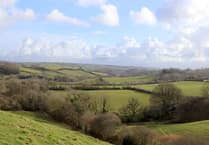THE LATEST plans for a museum complex in the village of St Ive to celebrate the life of social activist Emily Hobhouse have been approved.
The application relates to the Chantry, The Rectory and Blackthorn Grange. The Chantry is grade II* listed and is the former home of historical figure Emily Hobhouse.
The vision for the estate began in September 2017 when consent was given to change the use of two houses and their outbuildings to a museum use with a site manager’s accommodation, shop and café as well as alterations to The Grange.
But it soon became clear the scheme did not provide enough space to continue the Emily Hobhouse story.
A design team was brought in to explore the potential for a new museum building and the estate purchased The Rectory to enhance the site by providing residential accommodation.
A new application was approved in July 2020 for change of use of two dwellings and their outbuildings to a museum use, alterations and extension to The Grange associated with change of use to museum, erection of new museum building to the south of The Grange and redevelopment of The Rectory to provide three homes.
The latest amendments to gain approval are for minor details regarding the museum, the café, Blackthorn Grange and Rectory Grange which will be the staff facilities building, the gardener’s store, the glasshouse and potting shed and landscaping and parking – there will be 91 spaces in all.
The planning officer welcomed the plan saying: “This application proposes an ambitious, high-quality heritage-based redevelopment and expansion of the site.
“The development would create a new tourist attraction for Cornwall and result in significant economic investment, creating employment both during the construction phase and on site thereafter. These are significant benefits.”
Emily, born in St Ive in 1860 and who died in 1926, was a welfare campaigner, anti-war activist, and pacifist and primarily remembered for bringing to the attention of the British public, and working to change, the deprived conditions inside the British concentration camps in South Africa built to incarcerate Boer and African civilians during the Second Boer War.




